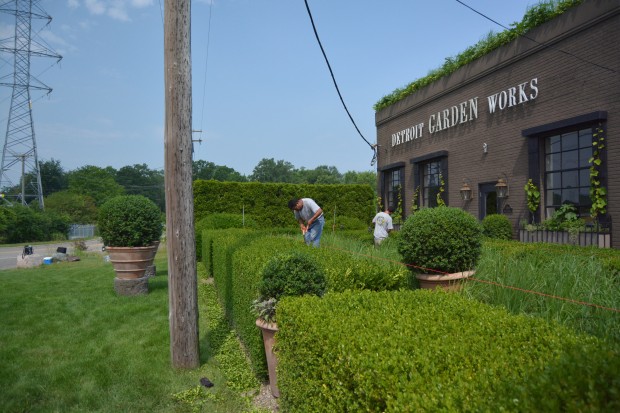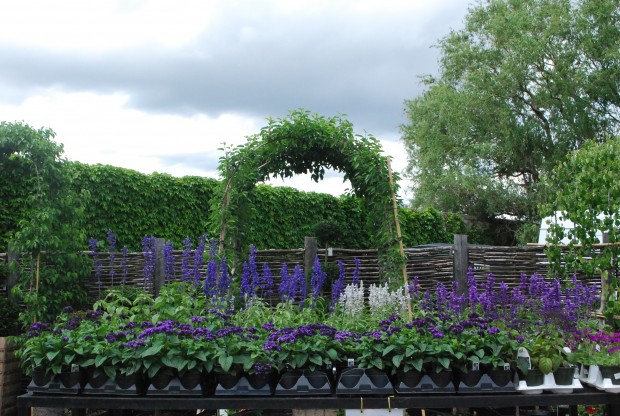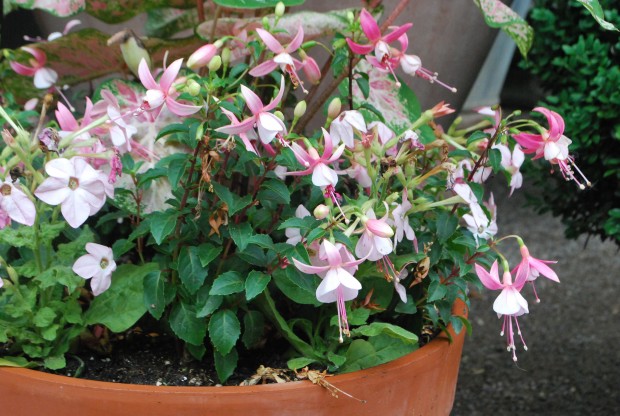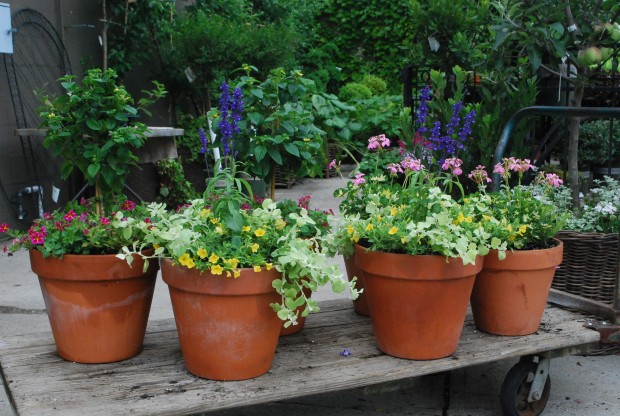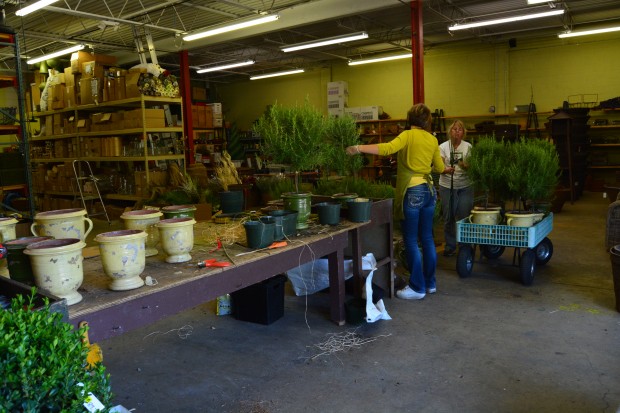 Garden? Landscape? These are single words which describe what I call a big fluid situation. A landscape and garden design is utterly dependent on a series of conditions that is not always so easy to make sense of. A design I love may not enchant a client. A tree, shrub, or perennial may not like my placement-contrary to my best and experienced effort. The plan I have in mind for a spot in my garden may fail for 100 reasons-all of those reasons may be good reasons. The perennial of my dreams may not like any of 10 different locations in my yard. A vicious winter can kill marginally hardy plants a gardener has worked so hard to establish. A tree can succumb to fire blight, girdling roots, or old age. A planting scheme for pots can peter out the end of July. What has taken 20 or 200 years to grow can be lost in an instant in a storm.
Garden? Landscape? These are single words which describe what I call a big fluid situation. A landscape and garden design is utterly dependent on a series of conditions that is not always so easy to make sense of. A design I love may not enchant a client. A tree, shrub, or perennial may not like my placement-contrary to my best and experienced effort. The plan I have in mind for a spot in my garden may fail for 100 reasons-all of those reasons may be good reasons. The perennial of my dreams may not like any of 10 different locations in my yard. A vicious winter can kill marginally hardy plants a gardener has worked so hard to establish. A tree can succumb to fire blight, girdling roots, or old age. A planting scheme for pots can peter out the end of July. What has taken 20 or 200 years to grow can be lost in an instant in a storm.
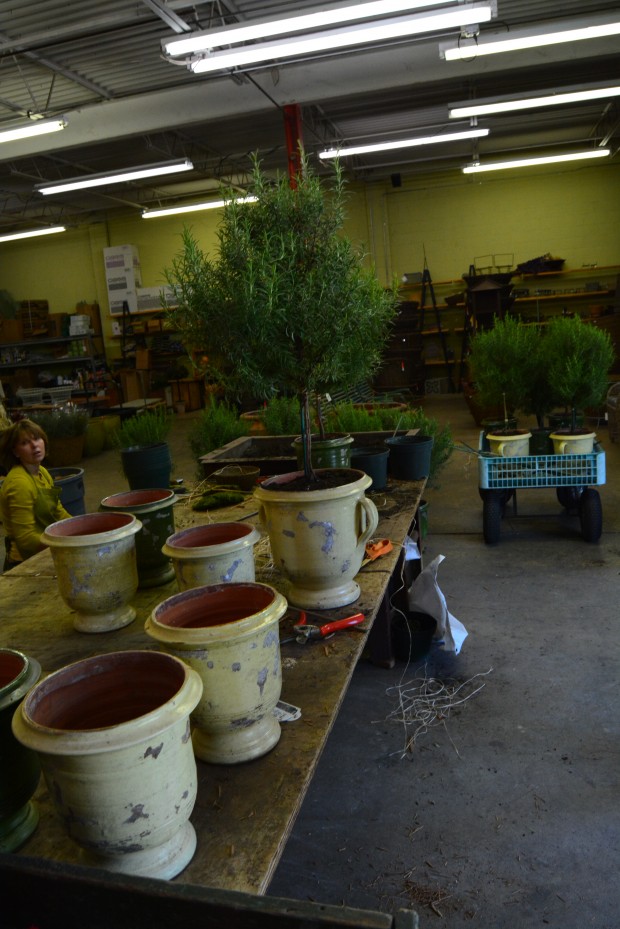 Every gardener knows what it means to give to their garden until it hurts. The planning, the buying, the planting, the tending- may be for naught. My internist told me once that a great doctor needed to be a good scientist. But really great doctors are gifted diagnosticians. They review every test, every measurement, every symptom, and make a decision about what is fueling the problem. Diagnosis is as much an art as a science. I am a middling gardening diagnostician. Given that, I have had to learn when it is a good idea to let go. Or try again. Or sleep on it. I do not have a laboratory. I just have a garden. But giving to anything until it hurts has very special rewards. Every gardener knows this.
Every gardener knows what it means to give to their garden until it hurts. The planning, the buying, the planting, the tending- may be for naught. My internist told me once that a great doctor needed to be a good scientist. But really great doctors are gifted diagnosticians. They review every test, every measurement, every symptom, and make a decision about what is fueling the problem. Diagnosis is as much an art as a science. I am a middling gardening diagnostician. Given that, I have had to learn when it is a good idea to let go. Or try again. Or sleep on it. I do not have a laboratory. I just have a garden. But giving to anything until it hurts has very special rewards. Every gardener knows this.
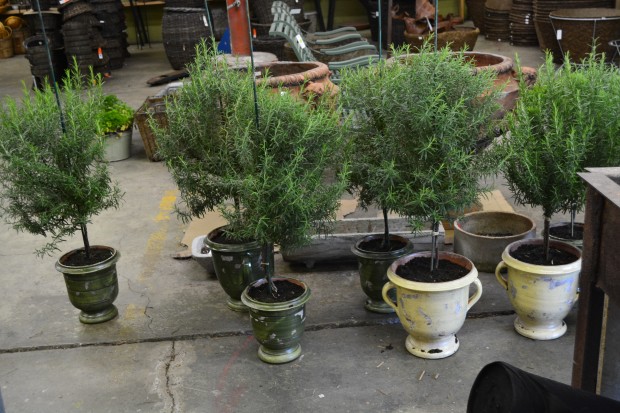 I agreed some months ago to donate centerpieces for a fundraiser for Mott’s Childrens Hospital in Ann Arbor. The Event on Main, a fundraiser established to raise money for the CS Mott Children’s and Women’s Hospitals, an affliliate and member of the University of Michigan Hospital system, has raised over 1 million dollars to support building and research in just the past 3 years. This fundraiser targeted the U of M food allergy center. This is the largest center of its kind which provides both clinical care and research into food allergies that afflict children. Ann Arbor based interior designer Jane Wood, a client of the store, and a member of the design committee, asked if I would donate 26 centerpieces for this event.
I agreed some months ago to donate centerpieces for a fundraiser for Mott’s Childrens Hospital in Ann Arbor. The Event on Main, a fundraiser established to raise money for the CS Mott Children’s and Women’s Hospitals, an affliliate and member of the University of Michigan Hospital system, has raised over 1 million dollars to support building and research in just the past 3 years. This fundraiser targeted the U of M food allergy center. This is the largest center of its kind which provides both clinical care and research into food allergies that afflict children. Ann Arbor based interior designer Jane Wood, a client of the store, and a member of the design committee, asked if I would donate 26 centerpieces for this event.
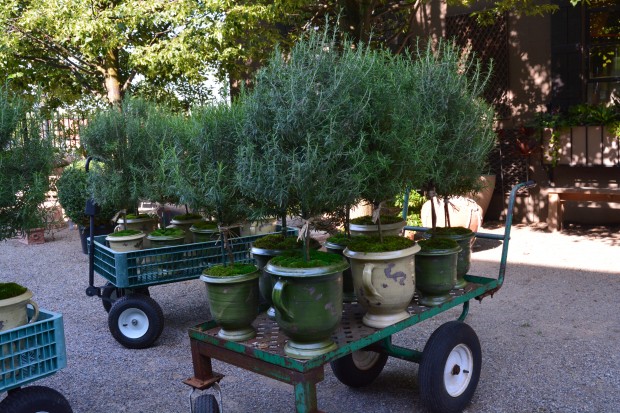
Our primary community event is the garden tour we sponsor to benefit the summer employment programs of the Greening of Detroit. But I felt that we could lend a hand to Jane’s project. We potted up 26 gorgeous rosemary topiaries in a variety of sizes of French glazed terra cotta pots. The invitation was designed and printed in white, gray, and pale yellow. I knew the tent would be large. I knew our French glazed pots in pale yellow and green, planted with rosemary topiaries would look good. A portion of Main Street in Ann Arbor would be closed for the evening for this event. Angie, Olga and I got all of the pots planted up, the rosemaries staked, and tied up with raffia.
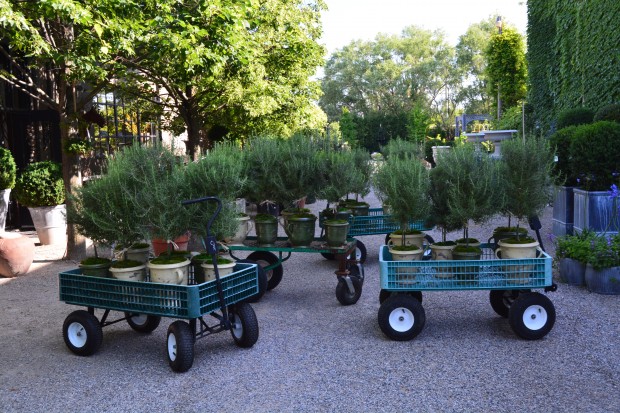
A van operated by a volunteer driver arrived at noon the day of the event. Scott helped pack all of the pots in boxes with reams of bubble wrap. We loaded the van, and sent it on its way. We did not want any accidents in transport. Jane wrote me a day later about the centerpieces. She was not expecting the level at which we contributed. I told her that gardeners have an instinct to give to the garden, any garden project, until it hurts. We committed to helping her, so we did. Just like we commit all of the energy and experience we have to the garden. The CS Mott Children’s and Women’s hospital at U of M may not mean much-until you need them. Should you need them, a lot of private individuals in Ann Arbor gave their all to make them available to you. We were happy to help-that part felt really good. Interested in more information about the Event on Main? http://www.mottchildren.org/
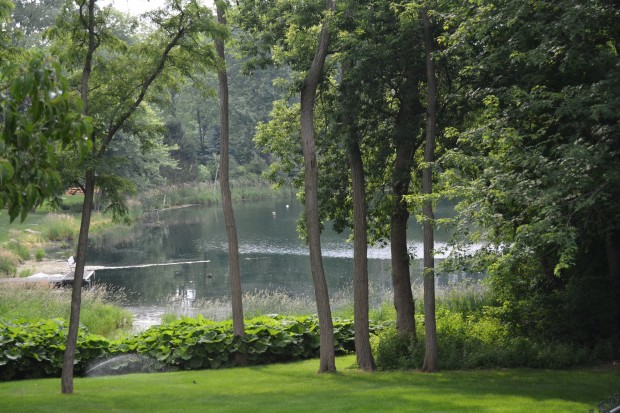
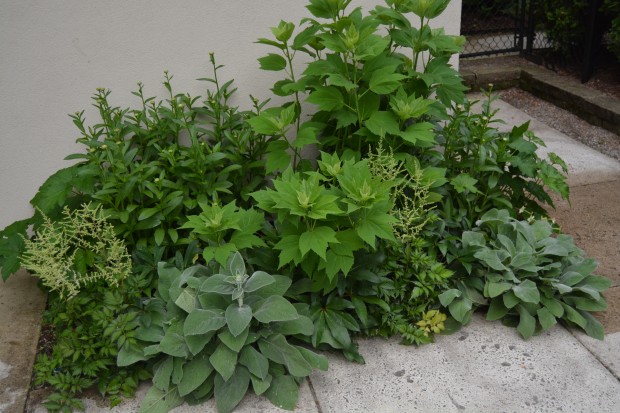


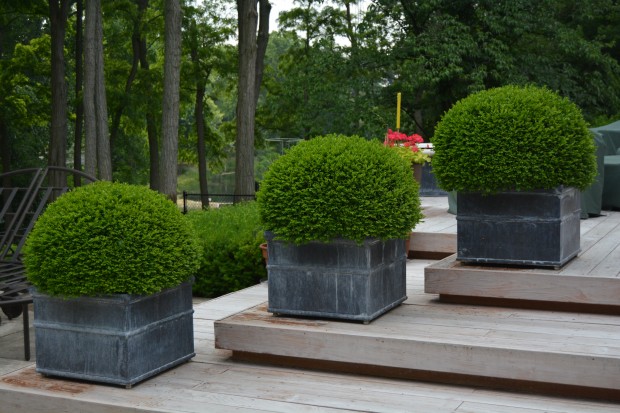







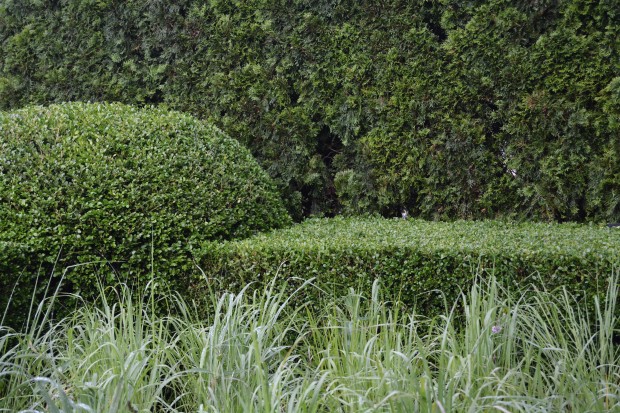

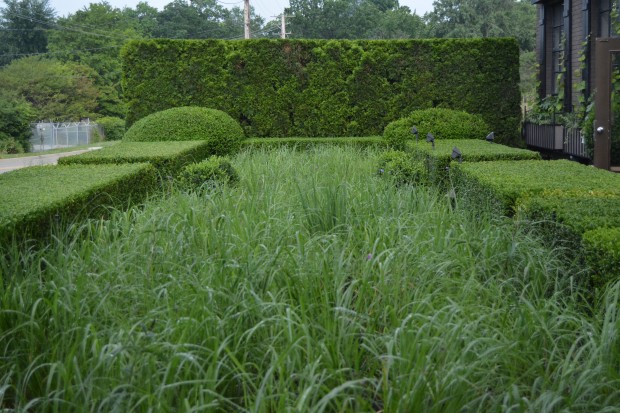
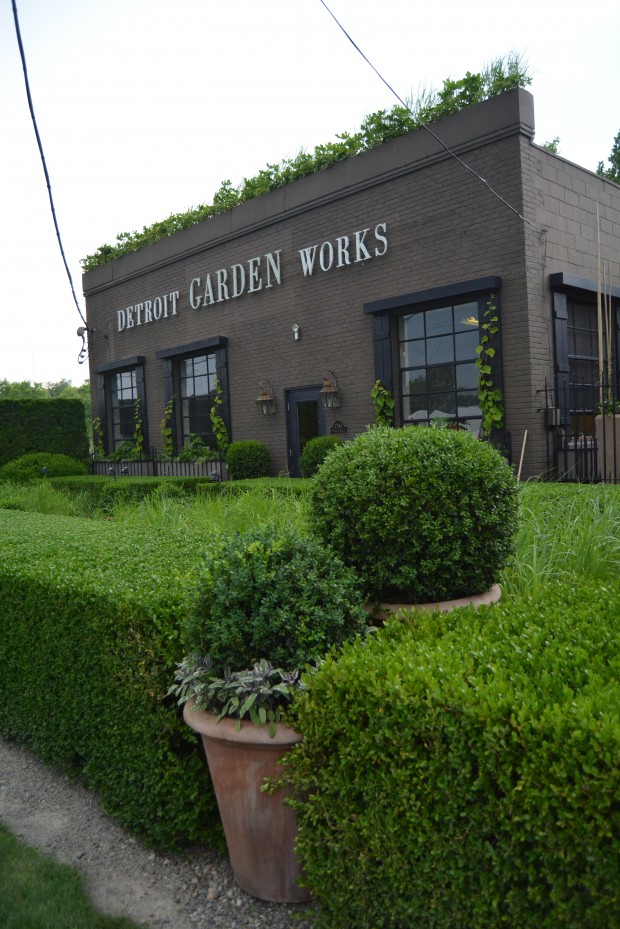 We lost 2 boxwood in the hedge over this past winter. We did have one replacement available. In this spot, we went another direction. We stitched the hedge back together, with a pair of potted boxwoods.
We lost 2 boxwood in the hedge over this past winter. We did have one replacement available. In this spot, we went another direction. We stitched the hedge back together, with a pair of potted boxwoods.